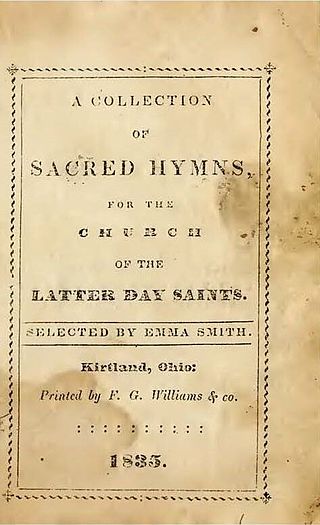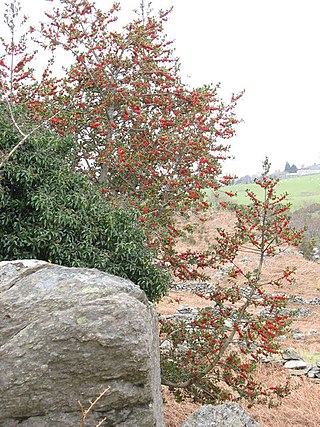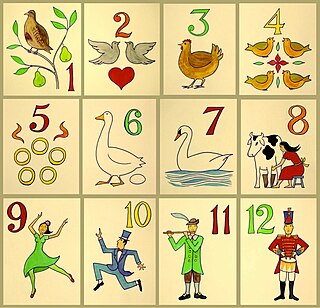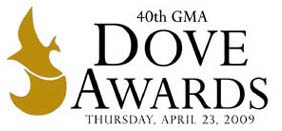
A Christmas Carol. In Prose. Being a Ghost Story of Christmas, commonly known as A Christmas Carol, is a novella by Charles Dickens, first published in London by Chapman & Hall in 1843 and illustrated by John Leech. A Christmas Carol recounts the story of Ebenezer Scrooge, an elderly miser who is visited by the ghost of his former business partner Jacob Marley and the spirits of Christmas Past, Present and Yet to Come. After their visits, Scrooge is transformed into a kinder, gentler man.

A Christmas carol is a carol on the theme of Christmas, traditionally sung at Christmas itself or during the surrounding Christmas holiday season. The term noel has sometimes been used, especially for carols of French origin. Christmas carols may be regarded as a subset of the broader category of Christmas music.

Christmas music comprises a variety of genres of music regularly performed or heard around the Christmas season. Music associated with Christmas may be purely instrumental, or, in the case of carols, may employ lyrics about the nativity of Jesus Christ, traditions such as gift-giving and merrymaking, cultural figures such as Santa Claus, or other topics. Many songs simply have a winter or seasonal theme, or have been adopted into the canon for other reasons.

John Milford Rutter is an English composer, conductor, editor, arranger, and record producer, mainly of choral music.
John Linton Gardner, CBE was an English composer of classical music.

A Collection of Sacred Hymns, for the Church of the Latter Day Saints. was the first hymnal of the Latter Day Saint movement. It was published in 1835 by the Church of the Latter Day Saints.
"Lord of the Dance" is a hymn written by English songwriter Sydney Carter in 1963. The melody is from the American Shaker song "Simple Gifts". The hymn is widely performed in English-speaking congregations and assemblies.
"I Saw Three Ships (Come Sailing In)" is an English Christmas carol, listed as number 700 in the Roud Folk Song Index. The earliest printed version of "I Saw Three Ships" is from the 17th century, possibly Derbyshire, and was also published by William Sandys in 1833. The song was probably traditionally known as "As I Sat On a Sunny Bank", and was particularly popular in Cornwall.

"The Holly and the Ivy" is a traditional British folk Christmas carol, listed as number 514 in the Roud Folk Song Index. The song can be traced only as far as the early nineteenth century, but the lyrics reflect an association between holly and Christmas dating at least as far as medieval times. The lyrics and melody varied significantly in traditional communities, but the song has since become standardised. The version which is now popular was collected in 1909 by the English folk song collector Cecil Sharp in the market town of Chipping Campden in Gloucestershire, England, from a woman named Mary Clayton.
"God Rest You Merry, Gentlemen" is an English traditional Christmas carol. It is in the Roxburghe Collection, and is listed as no. 394 in the Roud Folk Song Index. It is also known as "Tidings of Comfort and Joy", and by other variant incipits.
Jaroslav Vajda was an American hymnist.

"The Twelve Days of Christmas" is an English Christmas carol. A classic example of a cumulative song, the lyrics detail a series of increasingly numerous gifts given to the speaker by their "true love" on each of the twelve days of Christmas. The carol, whose words were first published in England in the late eighteenth century, has a Roud Folk Song Index number of 68. A large number of different melodies have been associated with the song, of which the best known is derived from a 1909 arrangement of a traditional folk melody by English composer Frederic Austin.
"As with Gladness Men of Old" is an Epiphany hymn, written by William Chatterton Dix on 6 January 1859 (Epiphany) while he was ill in bed. Though considered by many as a Christmas carol, it is found in the Epiphany section of many hymnals and still used by many churches. The music was adapted by William Henry Monk in 1861 from a tune written by Conrad Kocher in 1838. The hymn is based on the visit of the Biblical magi in the Nativity of Jesus.

The 40th Annual GMA Dove Awards presentation was held on April 23, 2009 recognizing accomplishments of musicians for the year 2008. The show was held at the Grand Ole Opry House in Nashville, Tennessee, and was hosted by Rebecca St. James, Matthew West, and Lisa Kimmey.

"Masters in This Hall" is a Christmas carol with words written around 1860 by the English poet and artist William Morris to an old French dance tune. The carol is moderately popular around the world but has not entered the canon of most popular carols.

Henry Ramsden Bramley was an English clergyman and hymnologist perhaps best known for his collaborations with the composer Sir John Stainer. Along with earlier 19th-century composers such as William Sandys and John Mason Neale, Bramley and Stainer are credited with fuelling a Victorian revival of Christmas carols with their 1871 publication of Christmas Carols, New and Old, which popularised carols such as "The First Nowell", "God Rest You Merry, Gentlemen" and "The Holly and the Ivy".
Advent songs are songs and hymns intended for Advent, the four weeks of preparation for Christmas. Topics of the time of expectation are the hope for a Messiah, prophecies, and the symbolism of light, among others. Several of the songs are part of hymnals such as the German Catholic Gotteslob (GL) and the Protestant Evangelisches Gesangbuch (EG).
"The Rocking Carol", also known as "Little Jesus, Sweetly Sleep" and "Rocking", is an English Christmas carol by Percy Dearmer. It was translated from Czech in 1928 and is performed as a lullaby to the baby Jesus. The carol has also been known in English as the "Rocking" carol since an American edition in 1963. The carol has been recorded by Julie Andrews, Roger Whittaker and other artists.

"This Have I Done for My True Love", or "Tomorrow Shall Be My Dancing Day", Op. 34, no. 1 [H128], is a motet or part song composed in 1916 by Gustav Holst. The words are taken from an ancient carol, and the music is so strongly influenced by English folk music that it has sometimes been mistaken for a traditional folk song itself. It has often been described as a small masterpiece.










